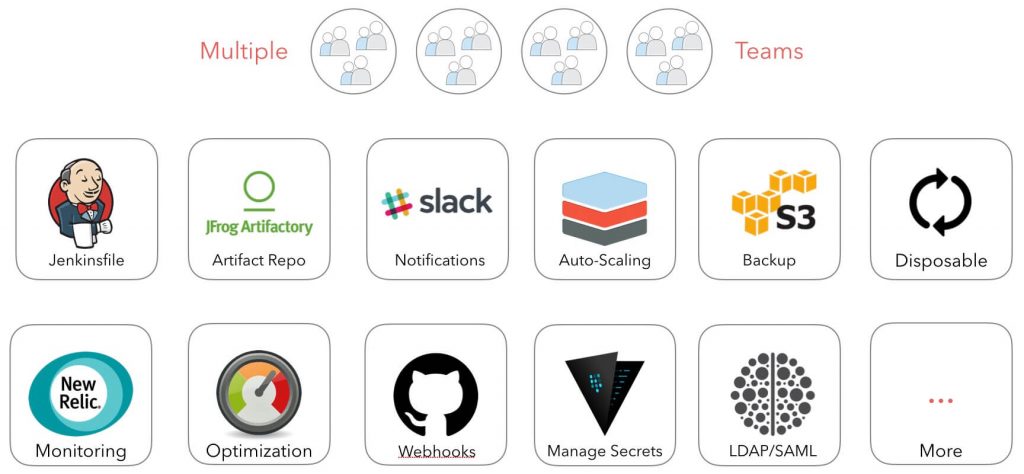
Continuous Integration Tools
Continuous Integration is no longer a buzzword. From its creation in 1991, it has become the industry standard for development teams that want to deliver software to their users faster. By bringing traditionally difficult, late-hitting events as early into the process as possible and automating processes that had been manual, CI removes many bottlenecks that often slow down development efforts while reducing the risk of major technical issues hitting late in the release cycle.
The center of CI revolves around a server, or a continuous integration tool that orchestrates tasks that the development team defines. The most popular CI servers are:
- Jenkins
- Bamboo
- Team City
- Travis CI
- And more!
From these tools, there are a host of continuous integration plugins that can help support increased development velocity. This can include things such as:
- A source code repository – hosting your code in a shared repository sets teams up for success, as it allows for collaboration. There are a number of open source and proprietary options available today, and choosing one will depend on the features that matter to your teams, and to the requirements for your project.
- A repository manager – this tool provides a proxy for remote repositories which caches artifacts, along with a host for internal artifacts. This provides an organization with a deployment target for software artifacts.

- A communication tool – Whether it’s Slack, JIRA, Trello, Asana or any other of the tools on the market, communication tools are great to encourage the collaboration needed for Continuous Integration to succeed. By making things easily shareable, teams feel enabled to implement the best practices that will allow them to move more quickly and feel more productive.
- Code quality tools
That last point, code quality tools, is often overlooked by some teams. Instead of incorporating testing in their new CI process, it is often left at its traditional place near the end of the development cycle. However, teams that ignore a quality strategy when building out a Continuous Integration toolset soon find that the legacy testing bottleneck often undermines any goals of delivering software faster.
Organizations that implement a sound continuous testing strategy in conjunction with Continuous Integration avoid this pitfall, and are easily able to scale their efforts and deliver on the promise of Continuous Integration.
